Atlantic Canada - Sept 28 - Oct 18, 2017
| Boston/Halifax | Gros Morne Park Newfoundland |
St. John's Newfoundland |
Cape Breton Is. Nova Scotia |
Charlottetown Prince Edward Island |
||||
 |
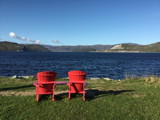 |
 |
 |
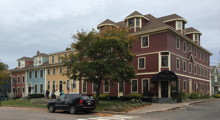 |
Boston
Our trip to eastern Canada to celebrate our anniversary started in Boston with a narrated tour of the city on the Hop-On Hop-Off trolley. Later from the Skywalk Observatory at the Prudential Tower, we got a good look at Back Bay, the Charles River and the Longfellow Bridge.

The Boston Public Library, established in 1848, houses 23 million items including a wealth of rare books and the personal library of John Adams. It's a focal point of Copley Square.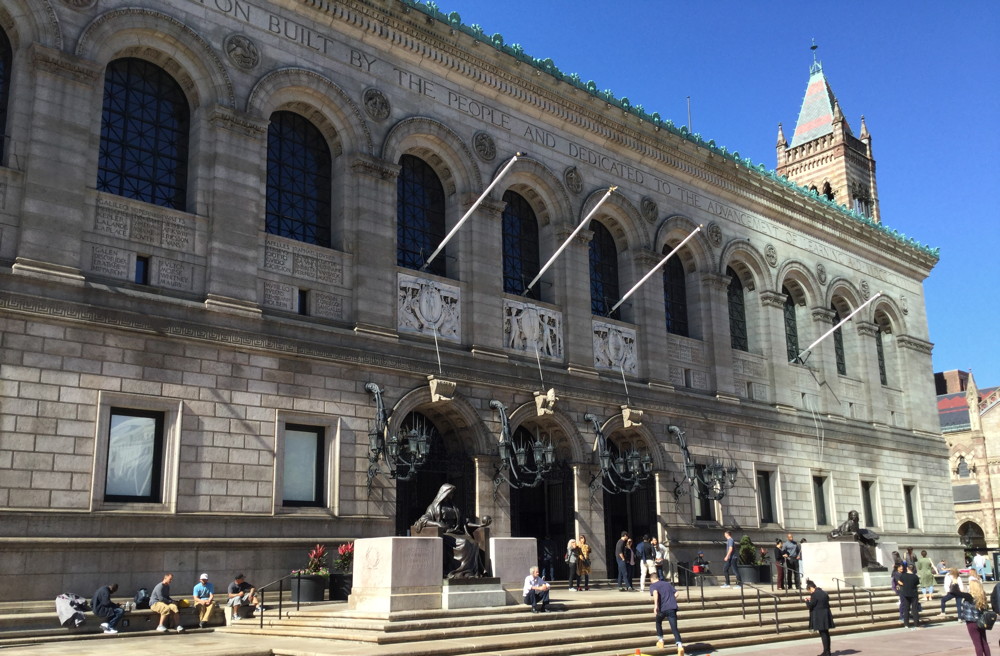

The Boston Public Library, established in 1848, houses 23 million items including a wealth of rare books and the personal library of John Adams. It's a focal point of Copley Square.

This is an interior courtyard...
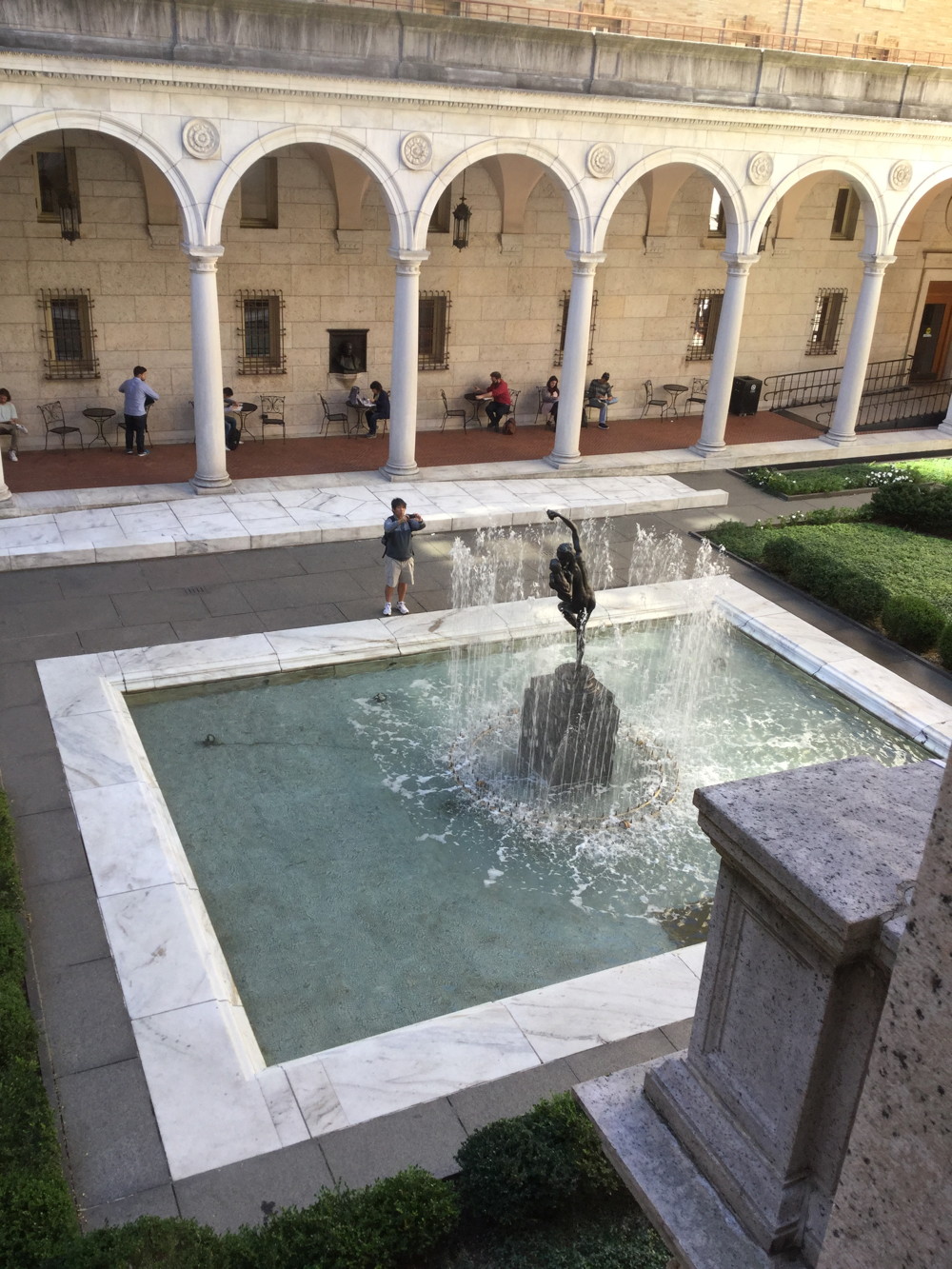
The grand staircase with the exquisite Pierre Puvis de Chavannes murals.

Al, Annamarie, and our niece Amy, enjoying dinner at Legal Seafoods in downtown Boston.

A two day visit with Joe and Lynne at their Harwich Port home included a tour of Cape Cod. Al and Joe boarded the Coast Guard's 36 foot long rescue boat CG-36500. The Coast Guardsmen used CG-36500 to rescue 32 seamen in a severe February storm in 1952. The film "The Finest Hours" was based on that event.
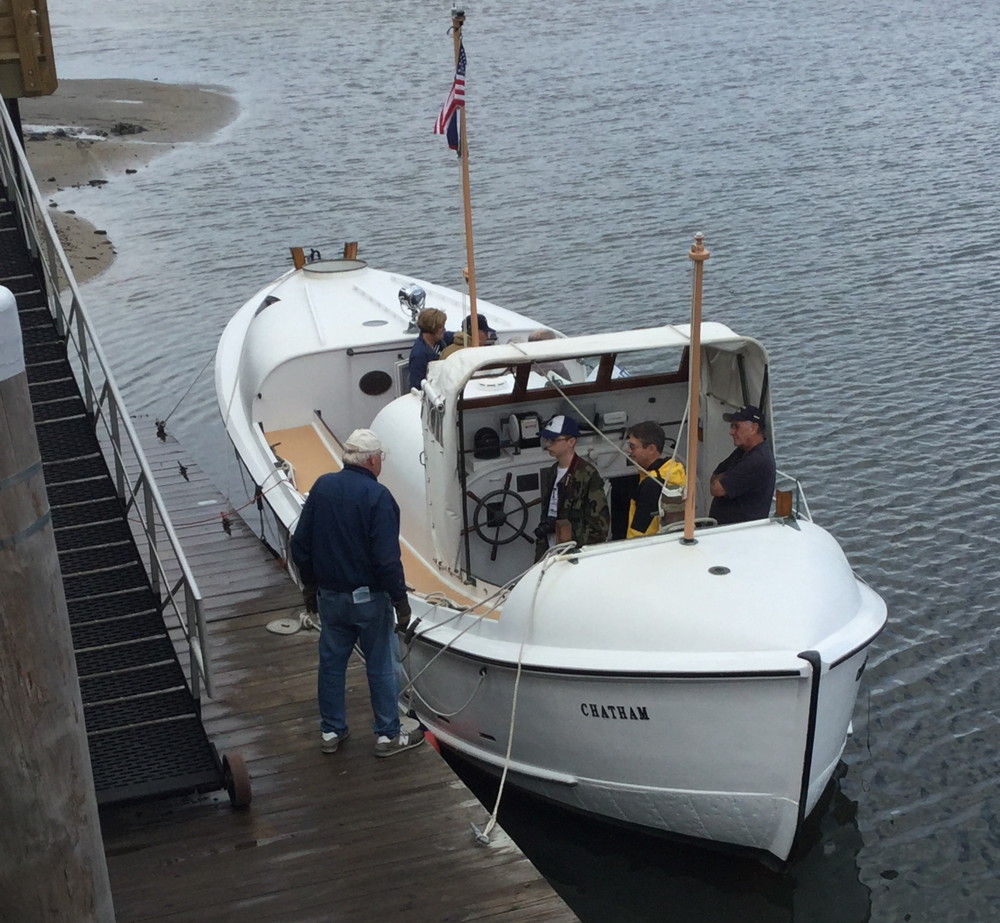

Boston from the air on our flight to Halifax, Nova Scotia (NS).

Halifax
Our shuttle driver from the airport to our downtown hotel provided us with a historic perspective of Halifax. One key event;in 1917 the French ship "Mont Blanc" carrying TNT and benzol collided with another ship. The Halifax Explosion resulted in the death of 1,900 people and 9,000 injuries and it was at the time the world's biggest non-nuclear explosion. Nearly the entire northern end of Halifax had to be rebuilt.
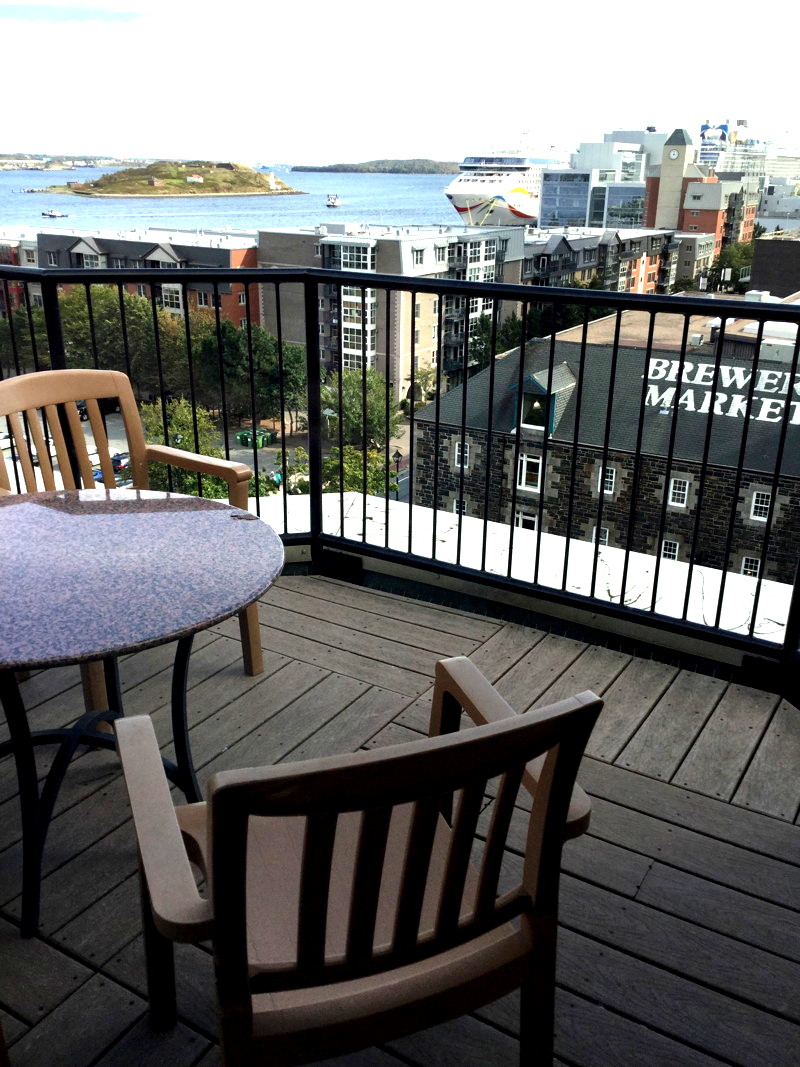

Our Hop-On Hop-Off trolley guide provided an excellent narration throughout the two hour circuit. Our first stop was at the Halifax Public Gardens, one of the oldest formal Victorian gardens in North America it began as a private garden in 1753.
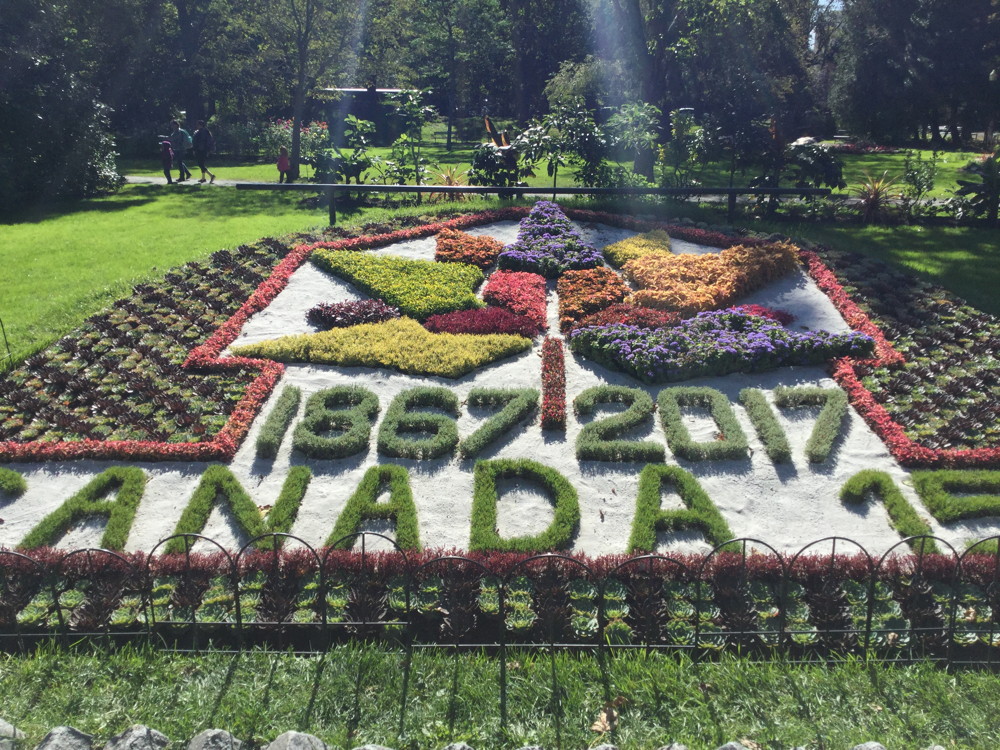
Summer concerts are offered here at this gazebo which graces the entrance to the gardens. It was built in 1887 for Queen Victoria's Golden Jubilee.
The Citadel Hill National Historic Site on Halifax's highest hill was erected between 1826 and 1856. The Old Town Clock, has been keeping time for 200 years.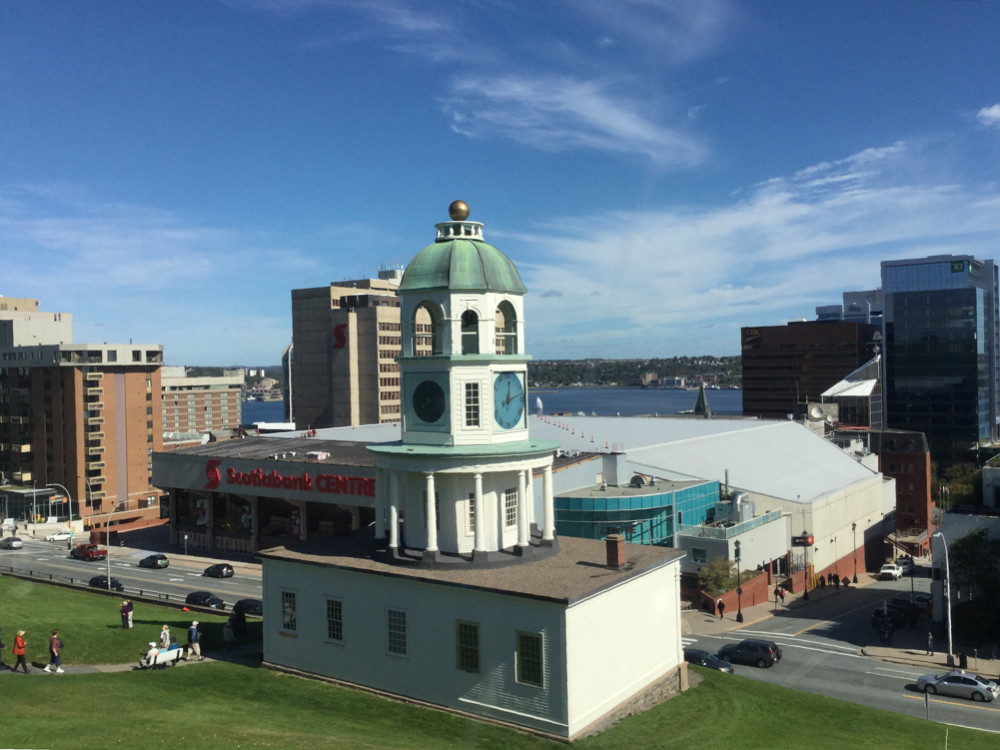
Walking along the waterfront we watched the the Halifax - Dartmouth Ferry, the oldest continuously operating salt water ferry in North America.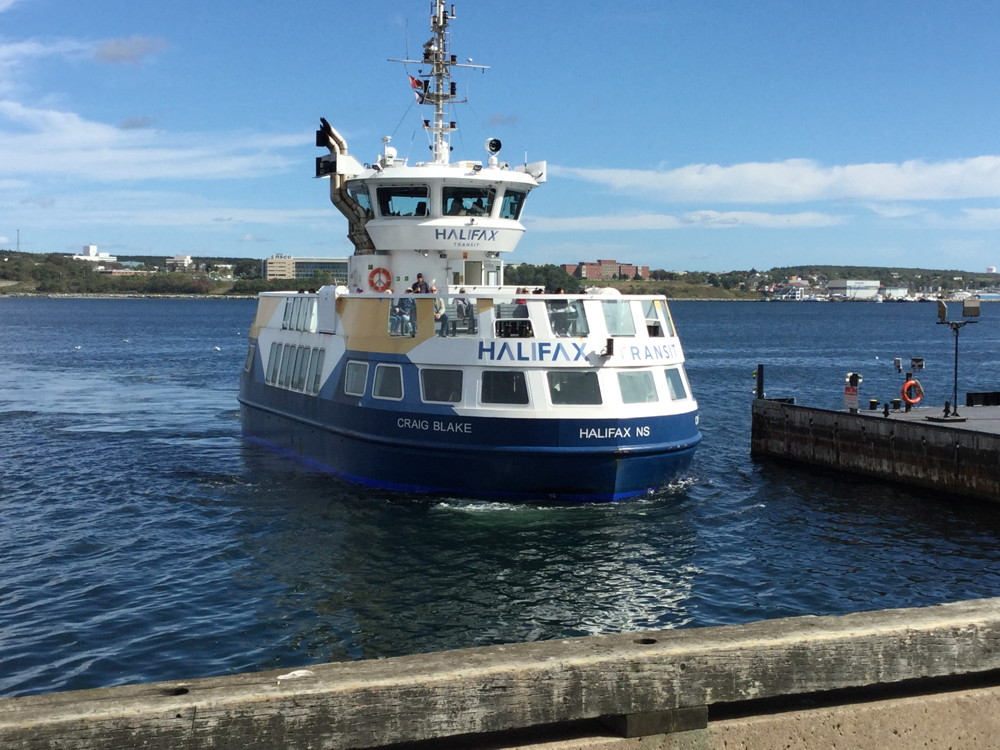

Summer concerts are offered here at this gazebo which graces the entrance to the gardens. It was built in 1887 for Queen Victoria's Golden Jubilee.

The Citadel Hill National Historic Site on Halifax's highest hill was erected between 1826 and 1856. The Old Town Clock, has been keeping time for 200 years.

Walking along the waterfront we watched the the Halifax - Dartmouth Ferry, the oldest continuously operating salt water ferry in North America.

...and this comical working harbor tug boat.
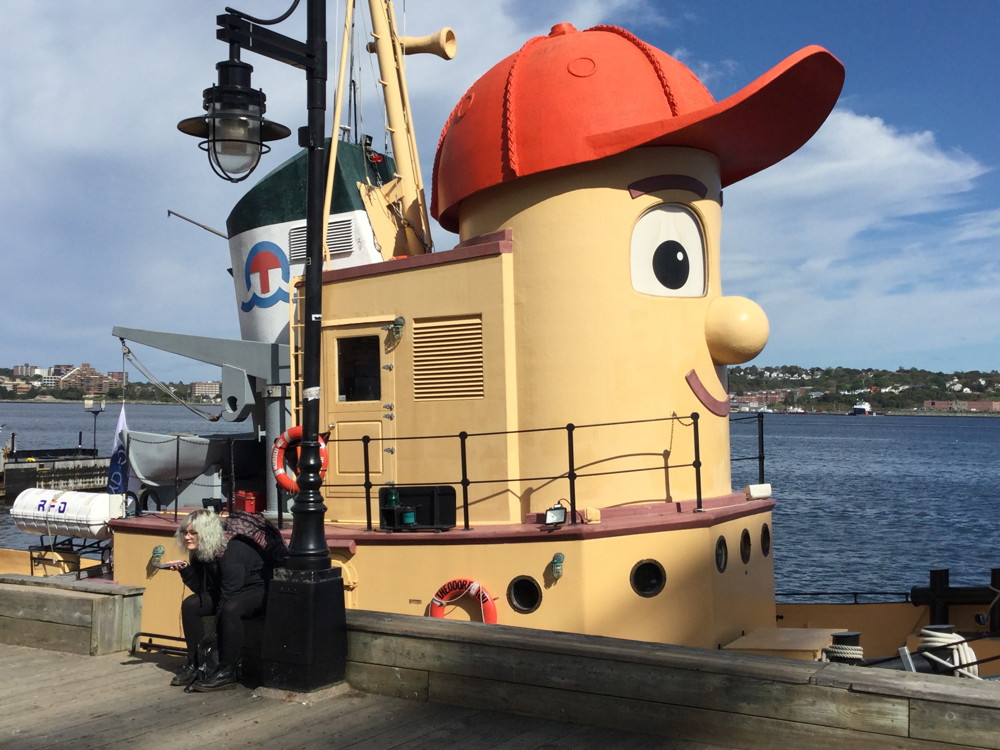
Dinner at McKelvies, in a handsome 1906 firehouse. Their menu featured fresh, local seafood.
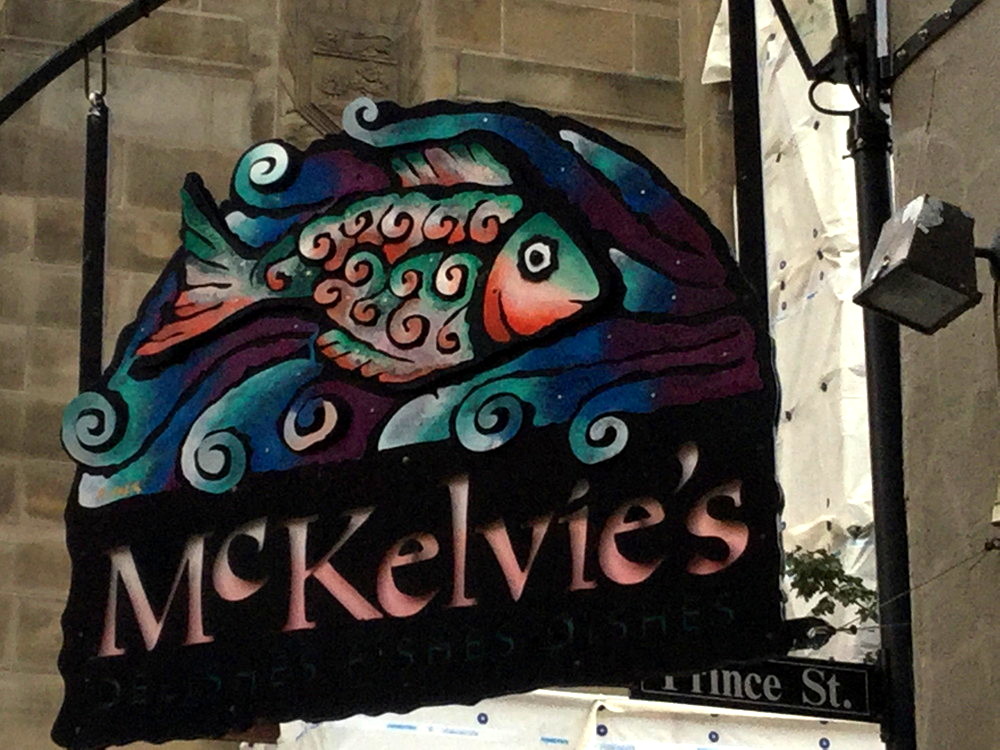
Newfoundland (NL)
We took a small Air Canada scheduled flight from Halifax,NS to Deer Lake, Newfoundland (NL), Canada's newest and easternmost province. Neddies Inn in Rocky Harbour, would be our B&B for the next 3 nights and our base for touring Gros Morne National Park, a UNESCO World Heritage Site. The Park protects 1,805 square kilometres of western Newfoundland's coastal lowlands and the towering Long Range Mountains .
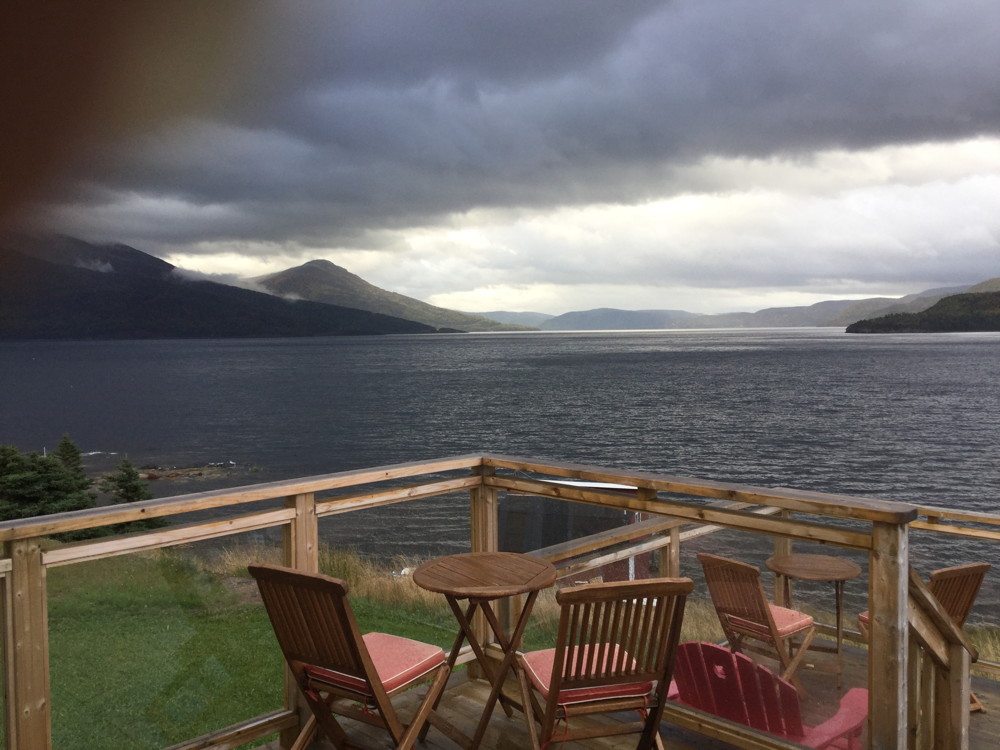

This was our typical hearty breakfast served in the inn's Black Spruce Restaurant.
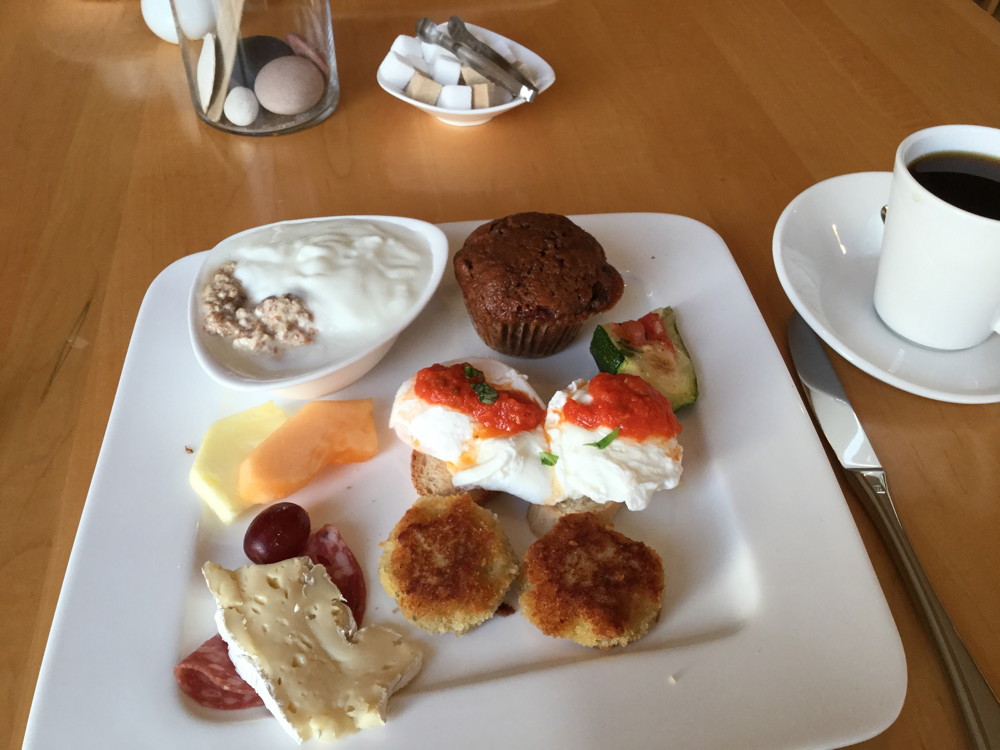
While the roads in Newfoundland are well graded and maintained we were often reminded to watch out for moose. These warning signs got our attention and indicated where car/moose collisions had occurred in recent years. More than 110,000 moose live in this province and most highways run throughout their habitats.


From Lomond, a camping and picnic site, looking west towards the East Arm of Bonne Bay in Gros Morne National Park, and our first view of the fall colors.
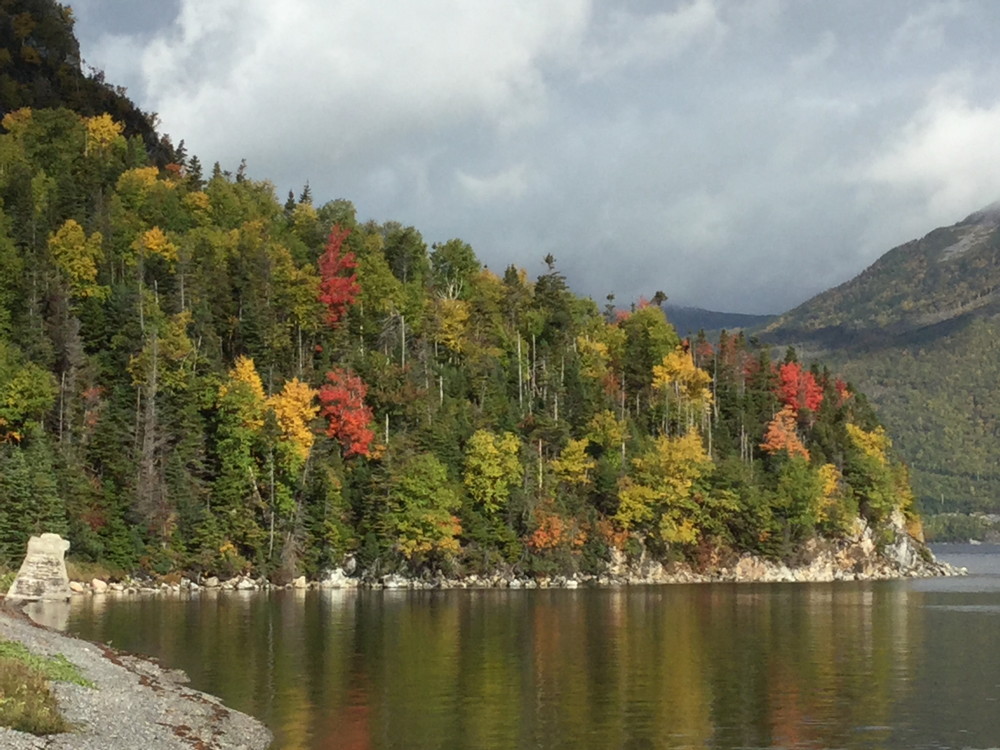
We walked the Tablelands trail, an easy 4 km round trip. This was the view looking down stream from the top of the trail. The Tablelands are a unique rock massif that was raised from the earth's mantle through tectonic upheaval. The lack of vegetation on the upper parts is due to the high manganese content of the soil, a unique geological feature in this area.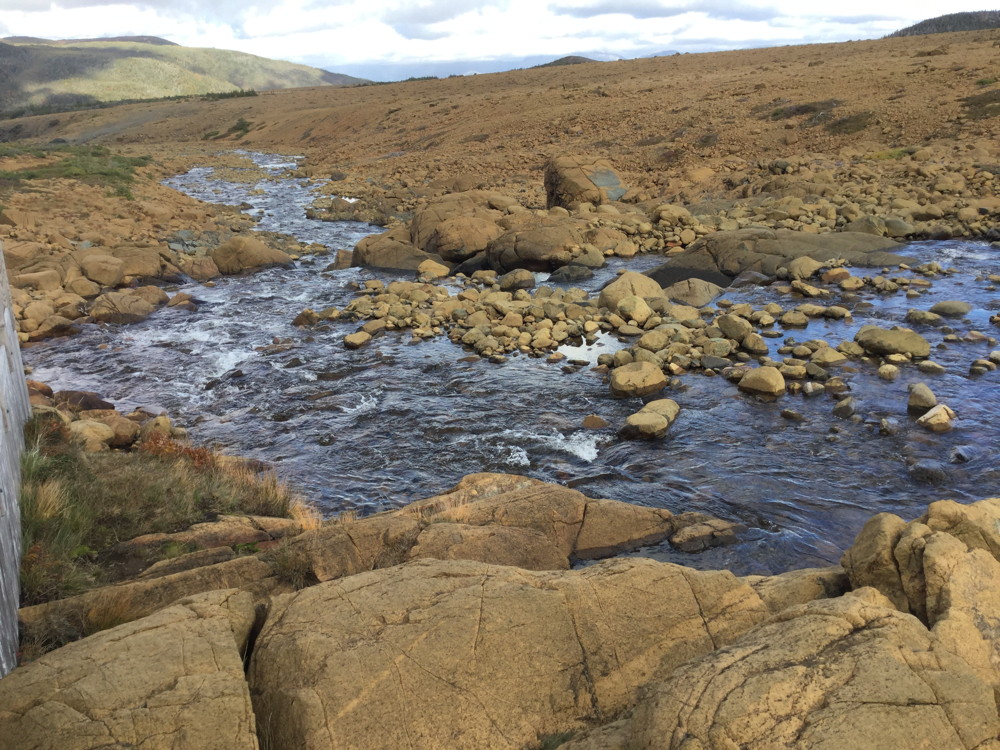

We walked the Tablelands trail, an easy 4 km round trip. This was the view looking down stream from the top of the trail. The Tablelands are a unique rock massif that was raised from the earth's mantle through tectonic upheaval. The lack of vegetation on the upper parts is due to the high manganese content of the soil, a unique geological feature in this area.

This monument pays tribute to Mattie Mitchell, a renowned Mi'Kmaq guide who contributed much to the Anglo-Newfoundland development, including mine locations and rail routes.
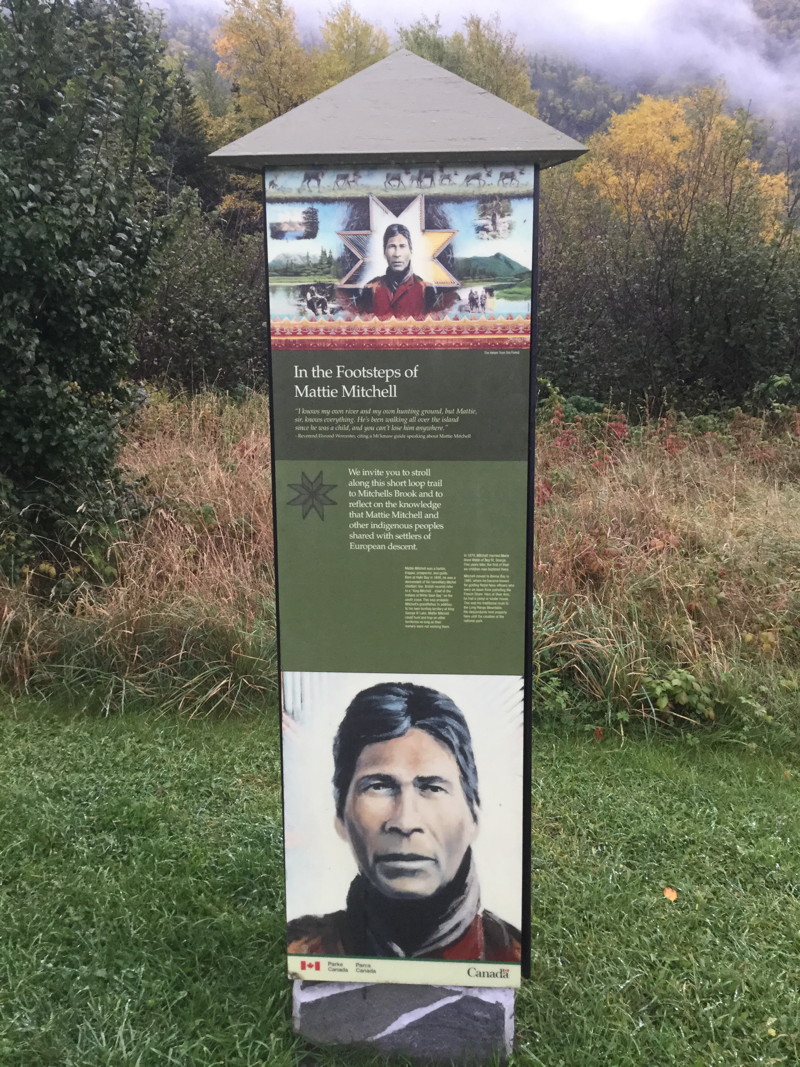

We had dinner at the Cafe in this general store, a small plate menu with seafoods, all very fresh and very good. The other diners local residents greeted us warmly and made sure we felt welcomed.


Broom Point Fishing Premises, in Gros Morne National Park, consists of a restored 1960's home of an inshore fishing family. The Mudge family called this home for 35 summers from 1941 to 1975. Boats and hand crafted fishing gear are part of the Premises. Fishing was the major industry in Newfoundland and it was not an easy life.
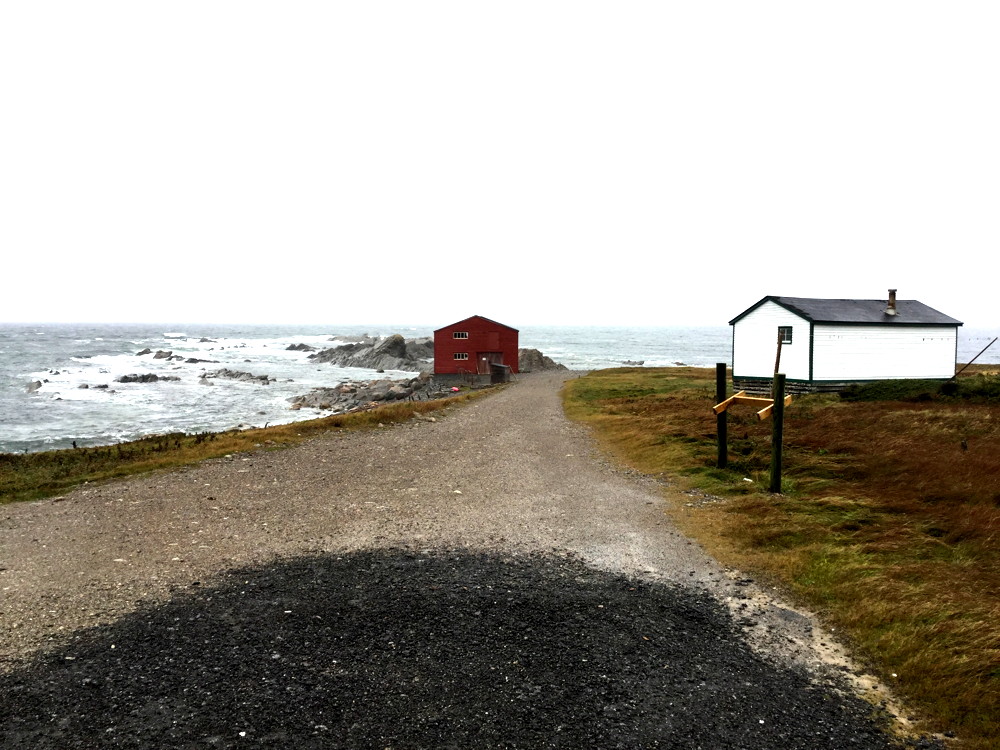

These bright and bold colors are typically used for buildings throughout the province and within Gros Morne National Park.

A window in the living quarters of the Lobster Cove Head Lighthouse. This facility tells the rich cultural story of Gros Morne, the people, the history and lighthouse that served as a beacon to those returning from sea.
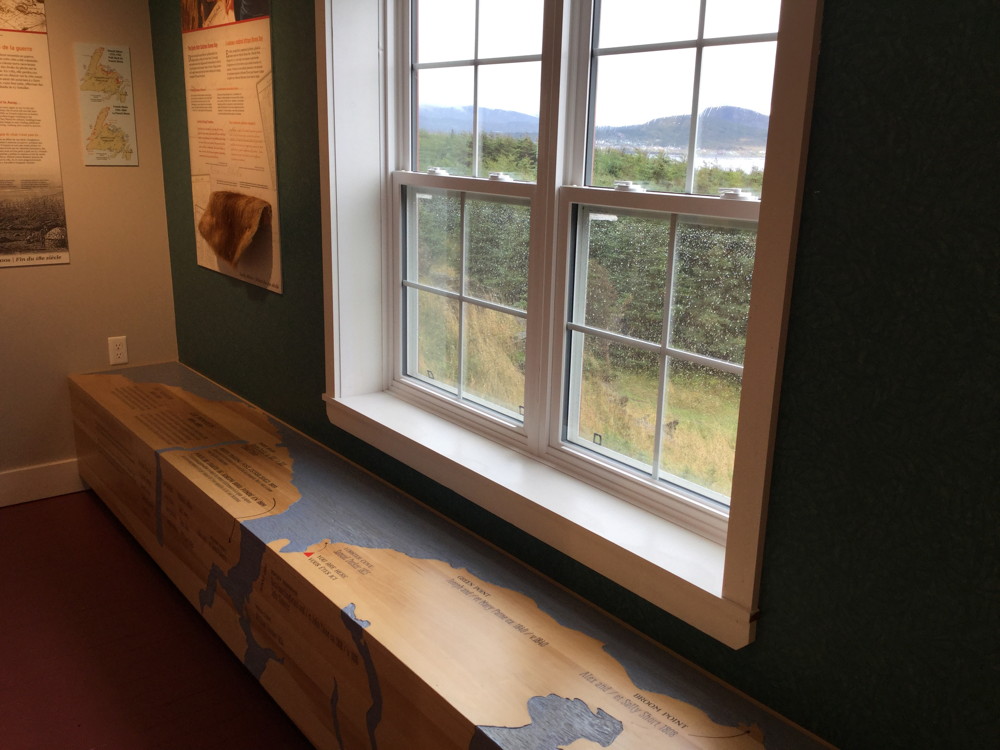

Annamarie holding a traditional hand made musical instrument used in "kitchen parties". Bonnie, from the Park Service, encouraged us to try it out. "Kitchen parties" are a Newfoundland folk tradition that first evolved as a shared pastime among family, friends and neighbors in rural villages. Since the kitchen was often the warmest room in the house people gathered there to share music, food and stories.An important part of Newfoundland's tradition and culture they are still popular today.
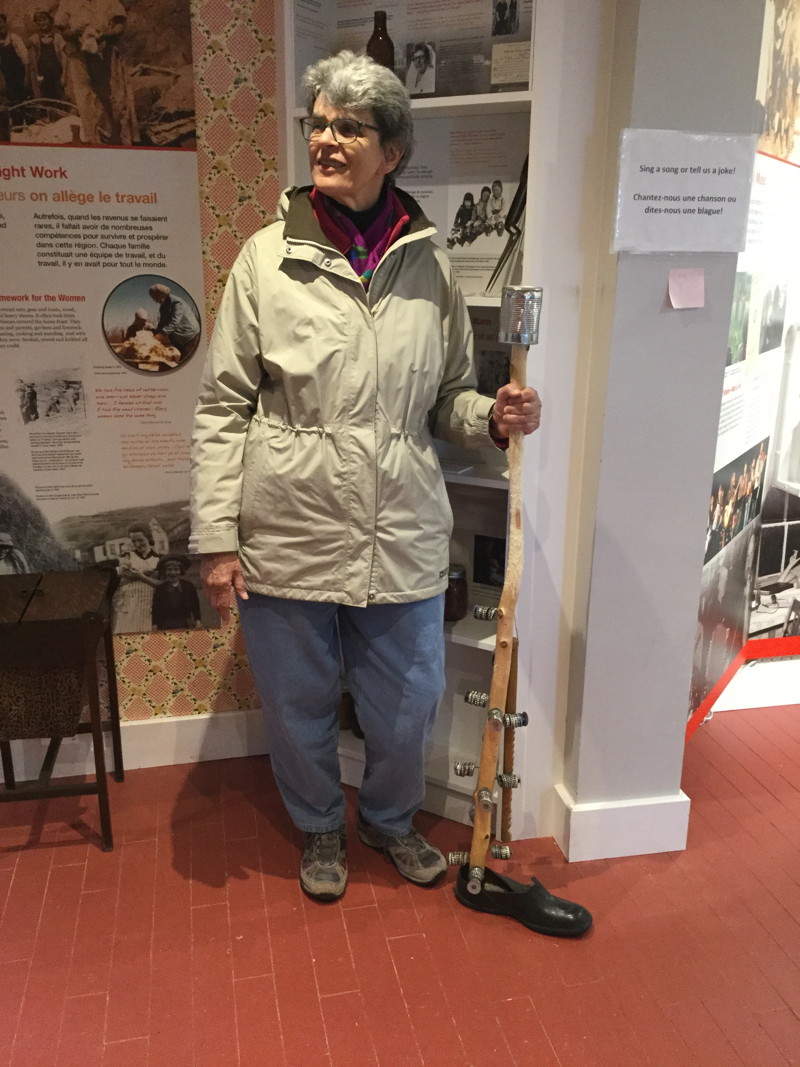
Martin's Point, site of the shipwreck of the SS Ethie. We were told a story of the daring December, 1919, rescue of 92 people that happened here.

Martin's Point, site of the shipwreck of the SS Ethie. We were told a story of the daring December, 1919, rescue of 92 people that happened here.

View looking towards the East Arm of Bonne Bay taken on our way back to the Deer Lake Airport. The park service positions these colorful chairs at strategic places. The blue sky was a welcomed sight this morning.


St. John's
Our trip from Deer Lake, NL to Newfoundland's capital city of St. John's, was in a 10 seater Air Canada prop plane.This meant we didn't have to make the the long 500 mile drive from one coast to the other. We had a good view of the landscape on the 40 minute flight.


St. John's working harbor as seen from our room at Marriott's Courtyard Hotel on Water St. This is major deep water port is in a city that dates back to 1627.
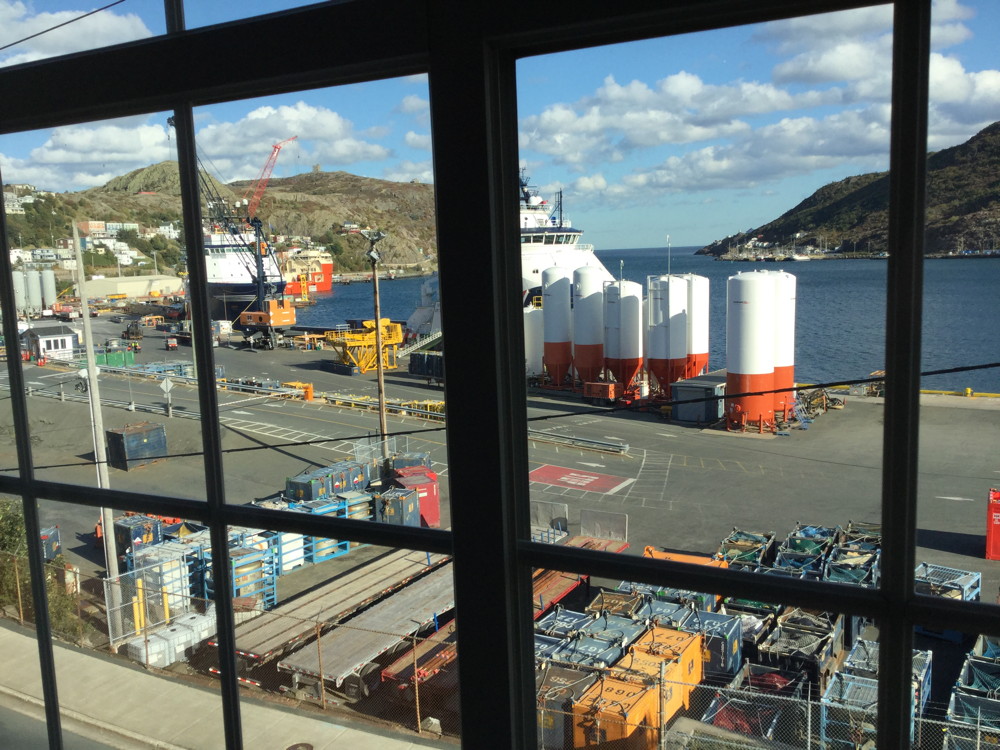
Cabot Tower, built in 1897, commemorates the 400th anniversary of explorer John Cabot's landing in Newfoundland. It's part of the Signal Hill National Historic Site and is the city's most prominent landmark.
This staircase inside the Tower leads to the Marconi Exhibit. The first transatlantic-wire transmission was received near here in 1901.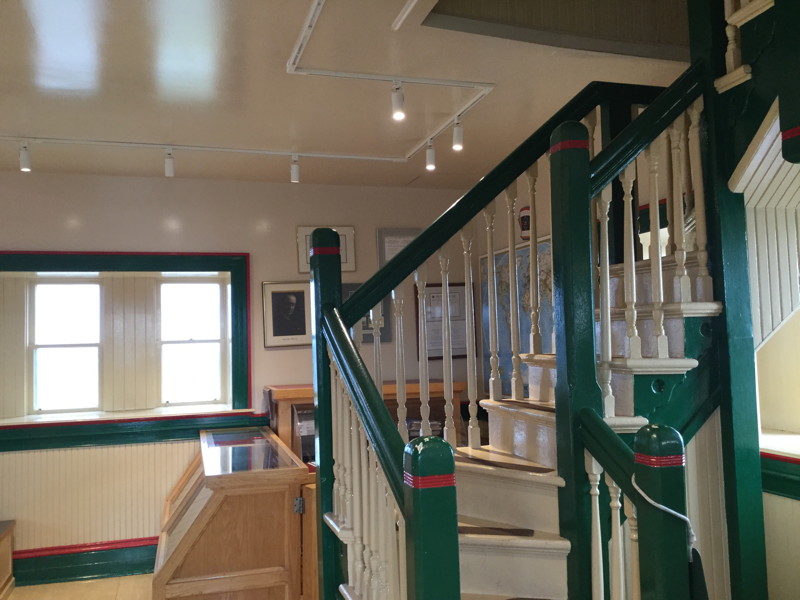
Looking down from Ladies Lookout, the highest point on Signal Hill. Legend has it that the women of St. John's came here to watch for ships carrying their sons, husbands and lovers.
Cape Spear National Historic Site, 12 kilometres SE of St. John's, is the most easterly point in North America.If you stand here with your back to the ocean the entire population of North America is in front of you. Nothing is behind you until Ireland. This lighthouse, built in 1836 has been restored to its original form and furnishings.

Cabot Tower, built in 1897, commemorates the 400th anniversary of explorer John Cabot's landing in Newfoundland. It's part of the Signal Hill National Historic Site and is the city's most prominent landmark.

This staircase inside the Tower leads to the Marconi Exhibit. The first transatlantic-wire transmission was received near here in 1901.

Looking down from Ladies Lookout, the highest point on Signal Hill. Legend has it that the women of St. John's came here to watch for ships carrying their sons, husbands and lovers.

Cape Spear National Historic Site, 12 kilometres SE of St. John's, is the most easterly point in North America.If you stand here with your back to the ocean the entire population of North America is in front of you. Nothing is behind you until Ireland. This lighthouse, built in 1836 has been restored to its original form and furnishings.

We had blue skies driving south on the Irish Loop. This area is known as Bear Cove.

Petty Harbour, one of many small coves on the loop drive.

The Rooms Museum, set on a historic site in downtown St. John's, showcases the cultural and artistic history of this province. The extensive collection of artifacts are displayed in a way that engages the visitor. The building designed by the PHB Group was planned to mirror the fishing rooms where families came together to process their catch. Local granite and wood, plus brushed aluminum and acres of glass were used in the construction.


Some exhibits in this stunning museum may be viewed from different floors.
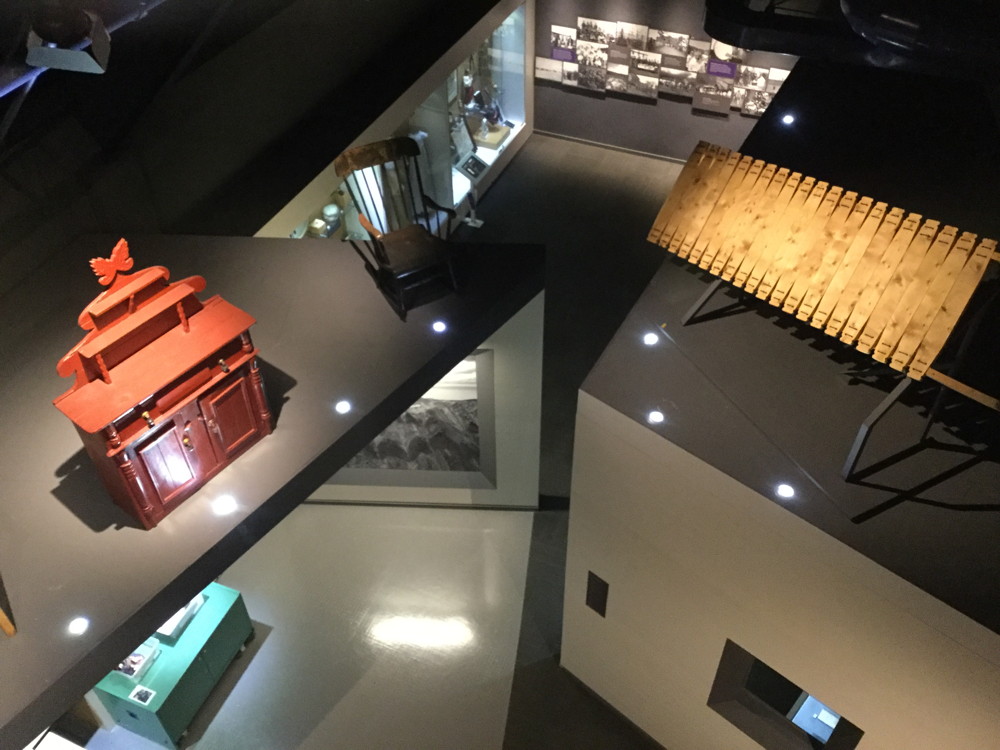
View of the harbour from The Rooms Museum.

Rowan Berry bushes (Mountain Ash) were seen all over the Avalon Peninsula.

Cape Breton Island, Nova Scotia (NS)
Flying back to Nova Scotia we picked up a car at the Sydney airport and began three days of exploring Cape Breton Island. We enjoyed lunch at the Red Shoe Pub in Mabou. Opened in 2005 and founded by the The Rankin Sisters, a well known singing group, it's a cozy spot that's popular with visitors and locals.


This hooked rug with 18 shoes including the Oxford shoe from the pub's sign was crafted by a group women from Sydney. Each year they attended a rug making retreat in Mabou and this rug was created to honor the Rankin Singers. Hooked rugs have a long history in Atlantic Canada and the craft is still popular today.


We found the Cornerstone Motel in Cheticamp to be a good base for a couple of days as we began exploring The Cabot Trail. This was our first look at the trees in prime color.


Looking outside our room into the lovely late afternoon light made everything glow.

The 186 mile Cabot Trail on Nova Scotia's Cape Breton Island weaves through The Cape Breton Highlands National Park.


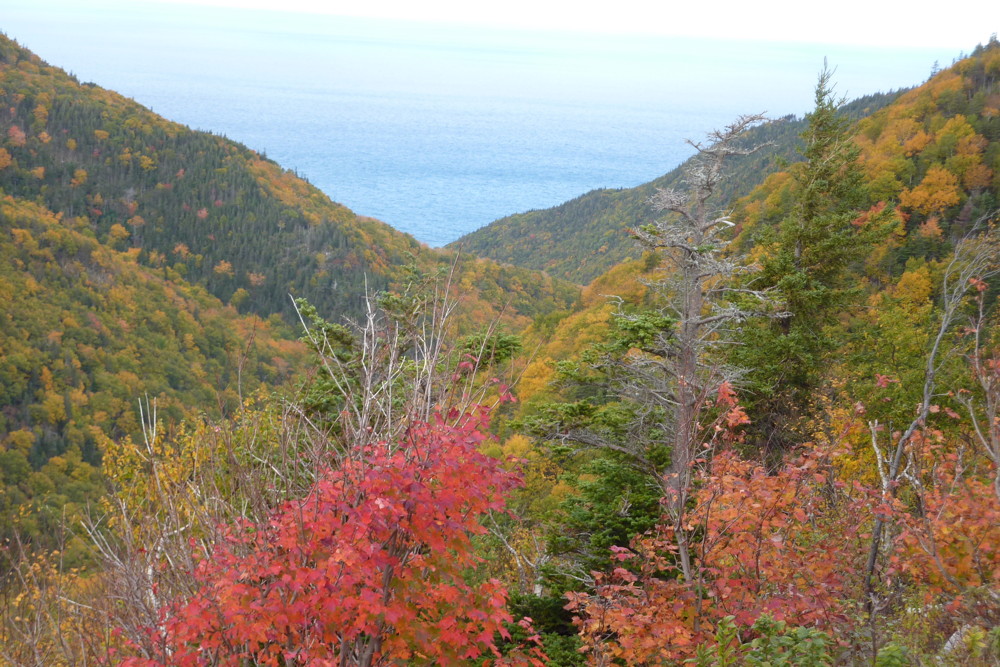
We took time to walk on one of many paths along the Cabot Trail.

Baddeck, is either the beginning or the end of the beautiful Cabot Trail. We completed the loop here, after exploring the town and nearby Bras d'Or Lake. The Silver Dart Motel was a comfortable spot for the night.
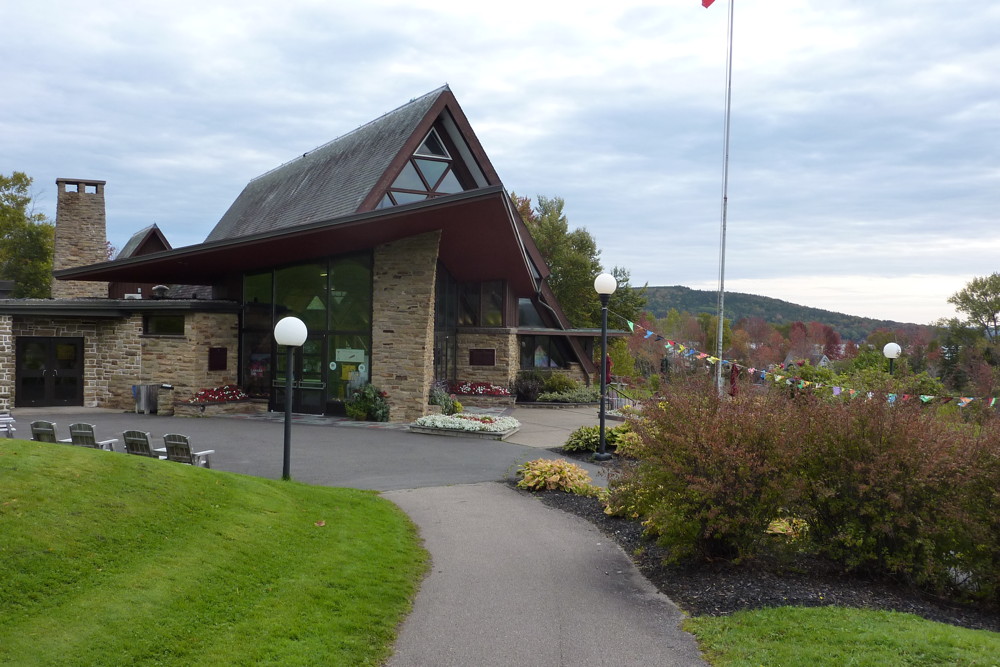

One of the exhibits in the Alexander Graham Bell Museum, in Baddeck, was this 2006 replica of the plane used on the first flight in Nova Scotia 100 years prior.


Charlottetown, Prince Edward Island (PEI)
Another short flight to the third province on this trip. This is part of lovely Charlottetown, PEI's capital city. We had wanted to stay at the Great George but they were all booked. We did find a comfortable room at a nearby Delta Hotel.


We found this 8 foot long hooked rug at the Confederation Centre of the Arts. The current show was in honor of the 150th anniversary of Canada's Confederation.


Some of the detail of this intricate rug.
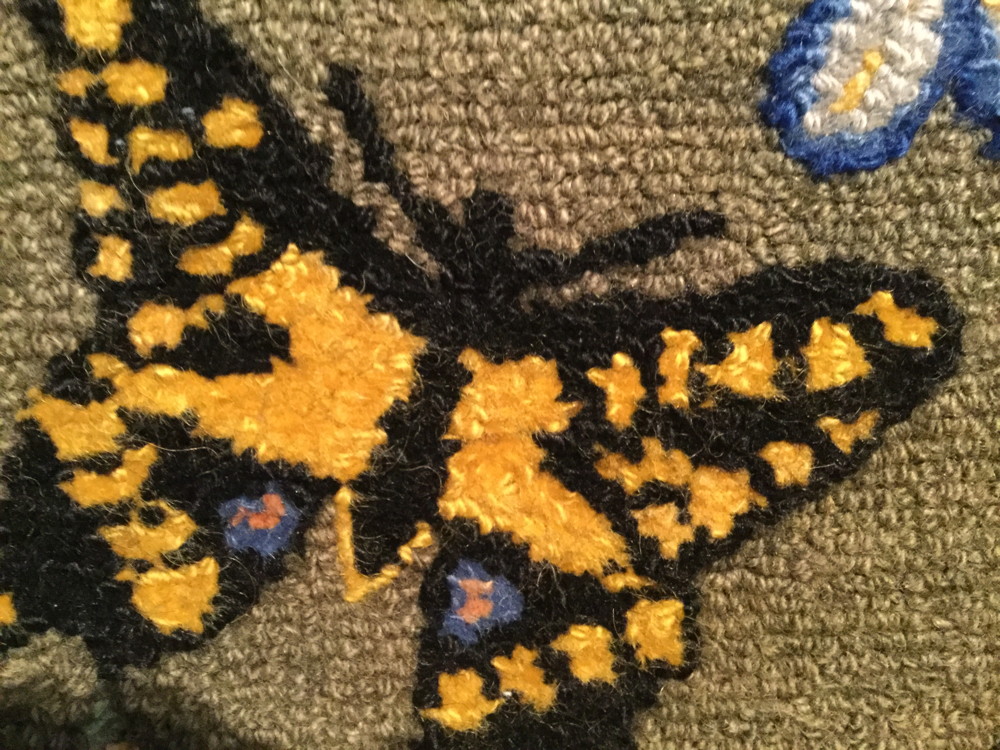
St. Peter's Anglican Cathedral where we attended the Sung Eucharist Service on Sunday.
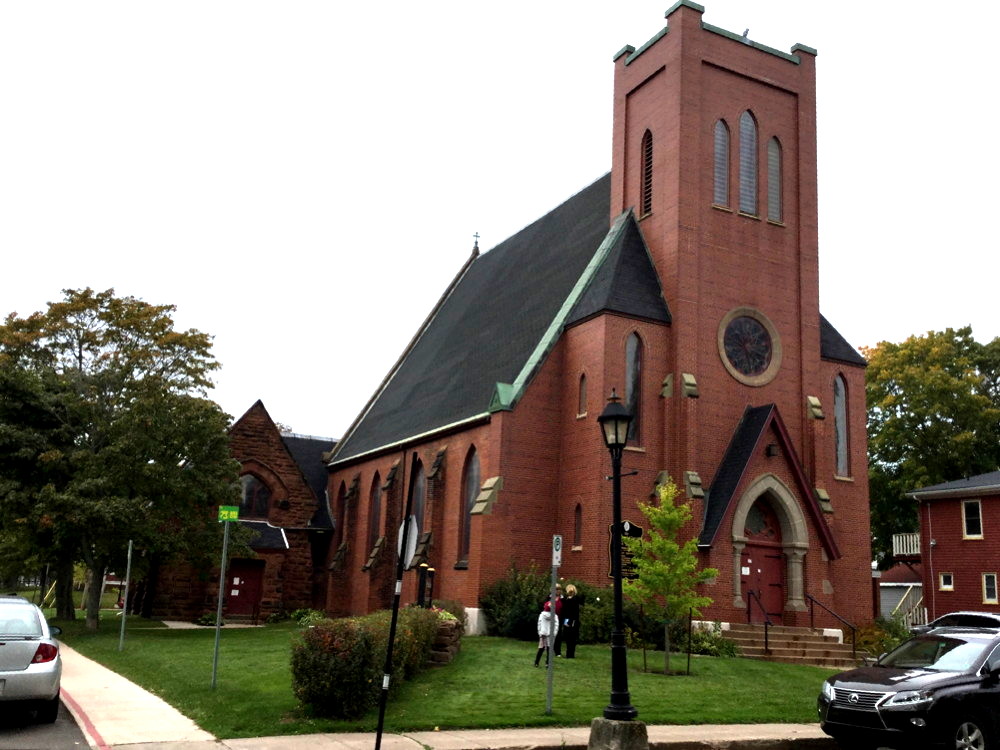

We were invited to a tour of the adjacent All Souls Chapel by Donalda, one of the guild ladies.


Driving north to PEI National Park we saw author Lucy M. Montgomery's birth place. Famous for the Anne of Green Gables series, her work, diaries and letters have been read and studied by scholars and readers worldwide.


The 8 mile long Confederation Bridge, connecting PEI to New Brunswick, opened on May 31, 1997, and it is the longest bridge in the world crossing ice-covered water. Construction involved 5,000 workers and took four years to complete. Initially the idea of ending ferry service and replacing it with a bridge was controversial and was put to a vote. The measure passed with 59.4% of the islanders voting yes.
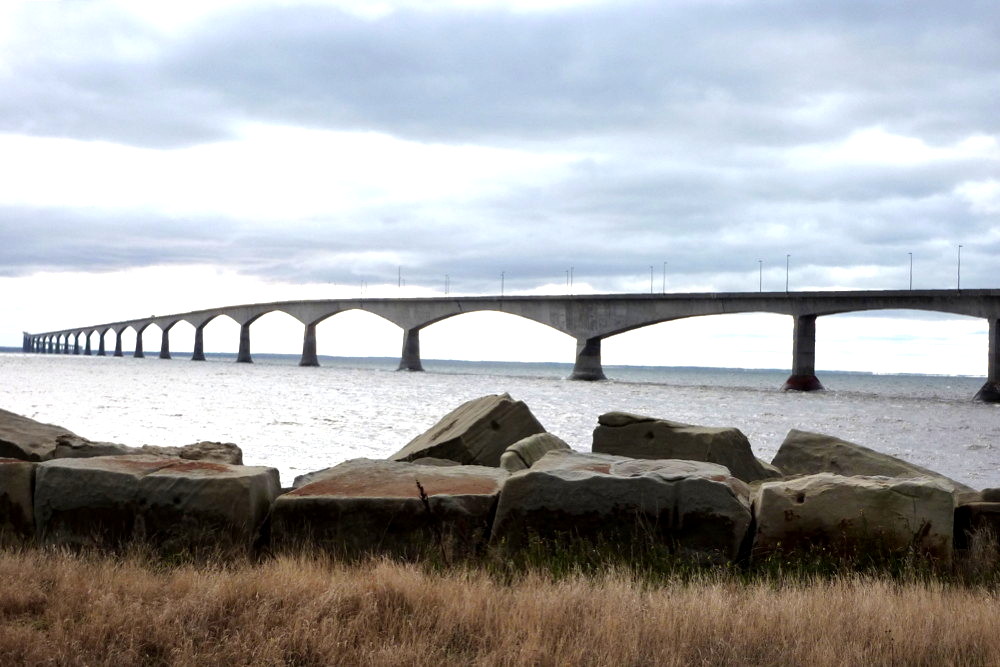

Returning home via Montreal, Quebec. We were surprised to learn that the population of Montreal and it's metropolitan area is over 4 million people.


Top Return to Trips